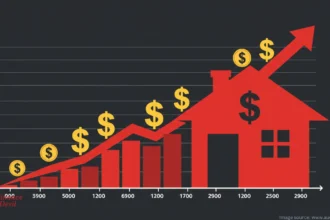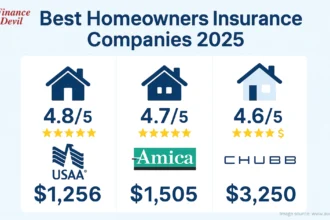Long term investing requires a disciplined strategy of identifying high-quality companies that can drive growth over 5-10+ years. While short term trading aims to capitalize on immediate momentum and volatility, long term investors seek businesses with enduring competitive advantages, leadership positions in secular growth industries, and the financial strength to ride out periodic downturns.
This guide examines the 10 best long term stocks to buy and hold for 2024 and beyond. The companies highlighted represent large-cap, blue-chip corporations with solid track records, dominant brands, and promising outlooks.
Benefits of Long-Term Investing

Before introducing the stock picks, let’s review the key benefits of long term investing:
Compounding Growth
Instead of cashing out gains, long term investors allow their returns to compound year after year. The power of compounding turns modest gains into substantial wealth over decades.
Lower Transaction Costs
Infrequent trading activity significantly reduces commissions, spreads, and other transaction fees compared to short term trading. Those savings remain invested.
Tax Efficiency
Longer holding periods minimize realized capital gains. Unrealized gains can grow tax-deferred over time.
Reduce Market Timing Risk
Holding through volatility avoids poor timing of sells. Long term investors wait out temporary price declines.
Stronger Businesses Thrive
High-quality companies outperform over long time horizons. The best businesses build wealth by adapting and gaining market share.
READ ALSO: Top 10 Artificial Intelligence Stocks to Buy in 2024
Stock Picking Methodology
The best long term investments generally share the following characteristics:
- Dominant competitive position – The business possesses competitive strengths that cement its leadership position. This grants pricing power and brand value.
- Excellent management – Leadership has a proven track record of allocating capital wisely and delivering strong operational execution. They make decisions to reward shareholders.
- Financially healthy – The company maintains a sturdy balance sheet with reasonable debt levels and consistent, positive cash flows. This provides stability during downturns.
- Wide economic moat – Anything giving the company an edge versus rivals is considered its moat – technology, patents, scale, regulation, etc. The wider the moat, the stronger the long term profitability.
Using these criteria, here are 10 of the best stocks to buy and hold for 2024 and beyond:
READ ALSO: Vintage Stock: The Ultimate Entertainment Superstore for Movies, Games, Music and More
The 10 Best Long Term Stock Investments
1. Apple (AAPL)
Apple is the world’s largest public company by market capitalization and continues to grow its iconic brand. The company’s ecosystem of products and services, including the iPhone, iPad, Mac, Apple Watch, and AirPods, commands incredible customer loyalty. New innovations like augmented reality, streaming TV, AI, and autonomous vehicles provide growth runways. With iconic products and over $170 billion in net cash, Apple has dominant staying power.
Competitive advantages: Powerful brand equity, high switching costs, massive app ecosystem
Growth forecasts: Revenue is expected to grow 5% in 2023 and 7% in 2024. The EPS forecast sees gains of 10% in 2023 and 13% in 2024.
2. Microsoft (MSFT)
Microsoft is a diversified tech leader in personal computing, cloud services, gaming, AI, and more. Cloud computing, including Azure and Office 365, is the high-growth segment, accounting for over one-third of revenue. Microsoft’s competitive strengths include switching costs, network effects, and a huge partner ecosystem. With a fortress balance sheet and over $130 billion in cash, Microsoft has the financial base to keep innovating and taking market share.
Competitive advantages: Massive installed base, switching costs, brand power, high margins
Growth forecasts: Revenue growth is projected to be 11% in 2023 and 10% in 2024. EPS should rise approximately 15% in 2023 and 11% in 2024.
3. Visa (V)
Visa operates the premier global electronic payment network. The company facilitates over $11 trillion in payment volume annually. By charging a tiny fee per transaction, Visa reliably grows its revenue and earnings. The universally recognized Visa brand, vast cardholder base, merchant acceptance, and security investments provide unmatched scale and competitive strengths. This leaves Visa’s leadership position virtually unchallenged.
Competitive advantages: Network effects, high consumer adoption, merchant acceptance, security technology
Growth forecasts: Visa expects revenue to climb in the mid-teens percentage range over the next few years, with EPS growing 20%+ annually.
4. Walt Disney (DIS)
Walt Disney is the world’s strongest media and entertainment brand. Flagship assets include theme parks, movie studios, TV networks, and streaming services. Disney continues to gain share in the fast-growing streaming market with Disney+, Hulu, and ESPN+. New blockbusters,theme park expansions, merchandising, and shrewd acquisitions provide Disney with many growth channels over the next decade.
Competitive advantages: Dominant brand, creativity and original content, industry-leading assets, cross-promotion capabilities
Growth forecasts: Revenue and EPS are expected to grow at 8-10% annual pace over the next three years.
5. Berkshire Hathaway (BRK.B)
Led by legendary investors Warren Buffett and Charlie Munger, Berkshire Hathaway owns a broad portfolio of businesses, including insurance, utilities, railroads, manufacturing, and consumer brands. Berkshire invests its massive cash flows into stocks, bonds, acquisitions, and share buybacks. Its $340 billion cash stockpile ensures Berkshire can weather any economic storm while making opportunistic investments. Expect Berkshire to continue compounding wealth over the long term.
Competitive advantages: Disciplined capital allocation, insurance float, economies of scale, trusted brand, regulatory influence
Growth forecasts: Over the past five years, Berkshire’s book value and share price have increased by 8-9% annually. Continued growth is expected given the financial strength and investing prowess.
6. Costco (COST)
Costco has built an enormously loyal customer base as a membership warehouse club. Customers flock for bulk savings on everything from groceries to electronics. Costco’s key competitive strengths include its razor-thin margins that draw in shoppers, bargaining power to secure discounts from vendors, major scale, and customer loyalty. Its 79 million cardholders spend an average of $5,000+ per year. Costco has rewarded long term investors with consistent growth.
Competitive advantages: Ultra-low margins, immense scale, customer loyalty, and membership fee revenue
Growth forecasts: Expected to grow revenue by 8% and earnings by 11% next year. The EPS forecast sees 7-10% annual growth over the long term. Membership renewal rates remain excellent, at over 90% in the U.S. and Canada.
7. Home Depot (HD)
Home improvement giant Home Depot has cemented itself as the leading home improvement retailer. Home Depot sells building materials, home improvement supplies, and lawn and garden products to DIY homeowners, professional renovators, and contractors. The company continues to gain market share while also expanding via e-commerce and international growth. Home Depot’s brand power, supply chain advantages, and shareholder return policies make it a trustworthy long term investment.
Competitive advantages: Dominant brand in category, superior distribution network, purchasing power, high ROI on capital projects
Growth forecasts: Revenue growth is expected to average approximately 5% per year over the next five years. The EPS forecast sees gains of 11-13% annually over the same period.
8. Union Pacific (UNP)
Union Pacific operates one of the largest rail networks in North America. This makes UNP a major economic mover of freight and raw materials like coal, grains, crude oil, lumber, autos, and more. Railroads benefit from fuel efficiency over trucks, limited competition, and laws encouraging the use of rail infrastructure. UNP specifically benefits from its scale, high barriers to entry, pricing power, and steady demand across economic cycles.
Competitive advantages: Scale, high barriers to entry, advanced routes and terminals, operating efficiency
Growth forecasts: UNP’s management targets annual revenue growth of 2-3% per year and earnings growth of approximately 10% over the long run.
9. Lockheed Martin (LMT)
Lockheed Martin is a global aerospace, defense technology, and national security company. It manufactures advanced aircraft, naval vessels, missile defense systems, space technology, and cybersecurity solutions. As one of the world’s premier defense contractors, Lockheed Martin provides mission-critical capabilities to governments worldwide. Its costly platforms and integration services give it durable competitive edges. Geopolitical risk and government budget issues can cause periodic lumpiness, but the long term growth story remains intact.
Competitive advantages: Platforms, proprietary technology, customized integration, reputation and scale, high customer switching costs
Growth forecasts: Lockheed Martin aims to grow sales at or above the rate of the defense budget (5-7% projected) and grow EPS double-digit percentages each year.
10. JPMorgan Chase (JPM)
JPMorgan Chase is a global leader in investment banking, private banking, treasury services, consumer lending, and credit cards. Its diversified business lines and massive scale provide stability through economic cycles. JPMorgan has unrivaled competitive advantages, including a fortress balance sheet with $500+ billion in deposits, technology and analytics investments, brand authority, and operating leverage. While facing macroeconomic headwinds currently, JPMorgan’s long-term outlook remains strong.
Competitive advantages: Brand and scale, large customer base, advanced technology, conservative management, distribution network
Growth forecasts: JPMorgan targets over 15% return on tangible common equity over the business cycle. Targeting steady growth in loans, deposits, capital distributions, and share buybacks.
Key Benefits of These Long Term Investments
This collection of stocks offers:
- Healthy Dividends – All except Berkshire Hathaway and Costco pay growing dividends. Berkshire and Costco reinvest cash into growth instead.
- Leadership Positions – Each company is #1 or #2 in their respective industries. Leaders often maintain share through competitive advantages.
- Solid Financials – These businesses have strong balance sheets and produce ample cash flows to reinvest and reward shareholders.
- Pricing Power – The competitive strengths allow these companies to raise prices and earn high returns on capital. This leads to resilient earnings.
- Growth Runways – All of the picks have promising growth levers, including acquisitions, new products, and geographic expansion.
To Recap
For investors with long time horizons, buying shares in dominant, financially-healthy companies is a proven wealth-building strategy. The corporations highlighted above represent some of the world’s premier businesses, backed by durable competitive advantages that drive multi-year growth.
While short term noise and volatility are inevitable, these companies have promising outlooks and tenured management teams adept at adapting to evolving landscapes. Building a long term portfolio around these industry leaders can compound earnings and dividends over time. Patience allows the power of compounding to work its magic.
FAQs
Q: How long should you hold long term investments?
A: At least 5-10 years. Long term investing works best over extended horizons when compound growth has time to accumulate. Investors should think in terms of decades, not months.
Q: How many stocks should a long term portfolio contain?
A: Generally, 10-30 stocks provide ample diversification. Owning too many individual stocks can dilute gains. But concentrating on just a few is riskier. The 10-30 range balances concentration and diversification for most long term investors.
Q: What return can long term investors expect?
A: Historical S&P 500 returns have averaged 10% annually. However, long term investors should invest in quality companies, not just indexes. Disciplined stock picking can potentially achieve 12-15%+ annual returns on a portfolio of individually selected stocks.
Q: How often should long term investors review holdings?
A: At least quarterly, but the investment thesis should be focused on years, not quarters. Annually reviewing positions against the original reasons for purchasing can help ensure the logic remains intact. Long term investors trade very infrequently but do review holdings.
Q: Should long term investors add money regularly?
A: Yes. Regular investing via dollar-cost averaging helps smooth volatility. Investing the same fixed dollar amount monthly or quarterly ensures you buy more shares at lower prices and fewer at higher prices. Long term investing success depends considerably on regularly contributing money.
In another related article, Top Stock Trading Software Programs for Day Traders in 2024





